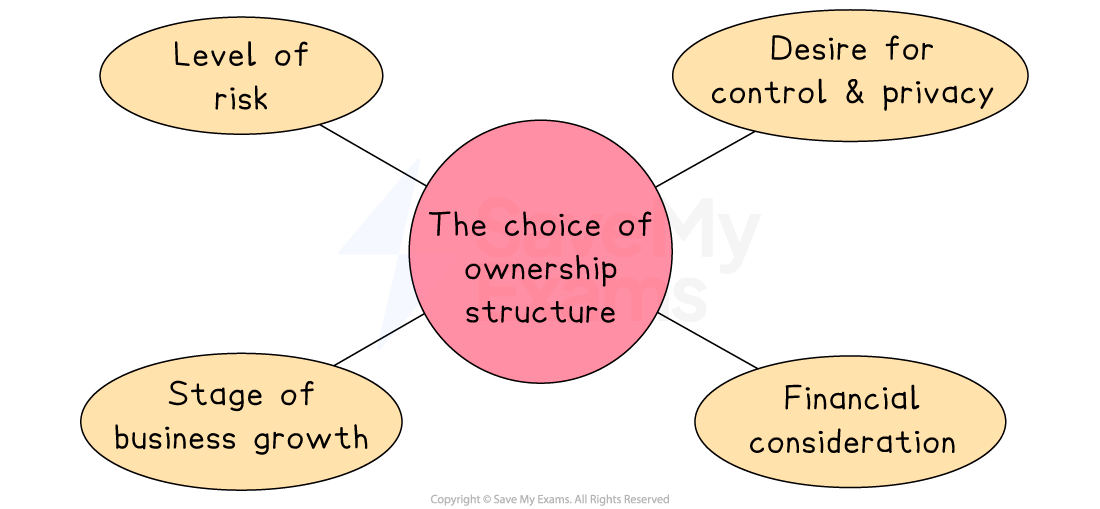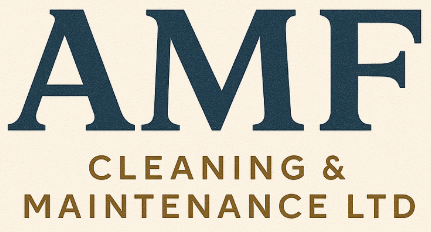Syllabus Edition
First teaching 2025
First exams 2027
Choosing a Suitable Type of Business Organisation (Cambridge (CIE) IGCSE Business): Revision Note
Exam code: 0450, 0986 & 0264, 0774
Determining a suitable ownership type
An entrepreneur must choose the ownership structure that suits the business needs, circumstances and the level of personal liability involved

Factors affecting the choice of ownership structure
Level of risk
Entrepreneurs who want to protect their personal assets may choose a company structure with limited liability
If the business is small and the owner is willing to take personal financial risk, a sole trader structure may be enough.
For example, a builder setting up alone may accept the risk of unlimited liability, but a software company seeking funding might choose the security of limited liability
Desire for control and privacy
Sole traders have full control and can make quick decisions
Partnerships share decision-making but may have disagreements
Companies are run by directors, decisions may be slower or involve more people and accounts need to be published
For example, a freelance designer may prefer to be a sole trader for full independence
Financial considerations
Larger businesses often need more capital, which may not be possible as a sole trader or partnership
Companies can raise money by selling shares
For example, a technology start-up needing finance may choose to become a private limited company to attract investors
Stage of business growth
Businesses planning to grow quickly or expand internationally may choose a company structure to attract shareholders and funding
Those aiming to stay small and local might prefer a simpler ownership type.
EFor example, a café wanting to open branches across the country may change from a partnership to a private limited company
Business organisation for small firms
When starting a business, entrepreneurs often choose simple and flexible ownership structures that match their goals, resources and attitude to risk
Comparison of ownership types for small firms
Ownership type | Why it’s a good choice | Best for |
|---|---|---|
Sole trader |
|
|
Partnership |
|
|
Private limited company |
|
|
Case Study
Pizzazz Pizzeria

Sarah is considering setting up a new pizza restaurant called Pizzazz. She has 3 different options
Start small as a sole trader
Seek a partner willing to invest in the business
Start small but register as a private limited company
Key considerations
Sarah does not have much money
Her sister, a chef, is looking to invest in a business
The business plan identifies significant start-up costs, including fitting out a pizza restaurant premises
Recommendation
A private limited company may be a good option, as it is relatively inexpensive to set up, provides Sarah with legal protection and may be more attractive for lenders such as banks
However, the partnership option is also attractive, as Sarah knows her sister well and relevant skills could be brought into the business as well as finance
As the business plan has identified significant costs, setting up as a sole trader is the least suitable option, as it involves personal financial risk for Sarah
Business organisation for growing firms
As a business grows, its needs become more complex, and choosing the right ownership structure becomes even more important
Growing businesses often require more finance, better risk management, and stronger organisational structures to support expansion
Comparison of ownership types for growing firms
Ownership type | Why it’s a good choice | Example |
|---|---|---|
Partnership |
|
|
Private limited company |
|
|
Public limited company |
|
|
Case Study
AMF Cleaning and Maintenance Ltd
AMF is a large, fast-growing private limited company that specialises in commercial cleaning and maintenance services
AMF is seeking to raise finance to continue their expansion. They can either
Become a public limited company
Seek venture capital investment but remain as a private limited company

Key considerations
If AMF sells shares to the public, its current owners lose some control of the company but gain access to a large pool of capital
Money raised through share sales does not need to be repaid, unlike loans
New shareholders will have high expectations and may pressure the business for strong short-term performance
Becoming a PLC involves legal and administrative costs, including publishing financial accounts and meeting stock exchange requirements
Recommendation
If AMF aims for rapid national or international expansion and needs substantial long-term funding, becoming a public limited company may be the most suitable option
This would allow them to raise large amounts of capital by selling shares to the public
However, if AMF prefers to keep tighter control over decision-making and avoid the pressures of public shareholders, seeking venture capital while remaining a private limited company could be a better solution
This would still provide significant funding but from fewer, more specialised investors
Examiner Tips and Tricks
Don’t simply describe each business type – exam questions expect you to recommend and justify the most appropriate option for the scenario, considering factors like liability, finance, and control

Unlock more, it's free!
Did this page help you?